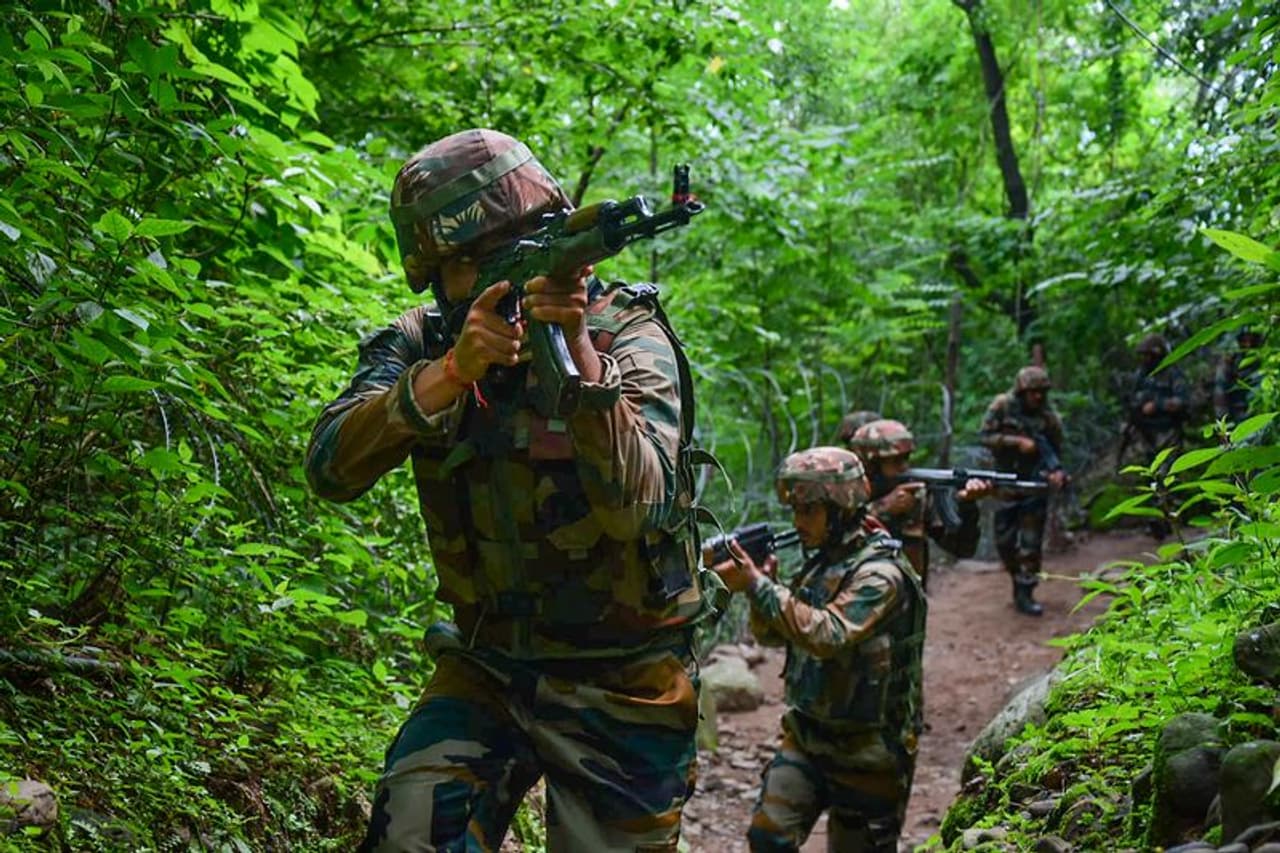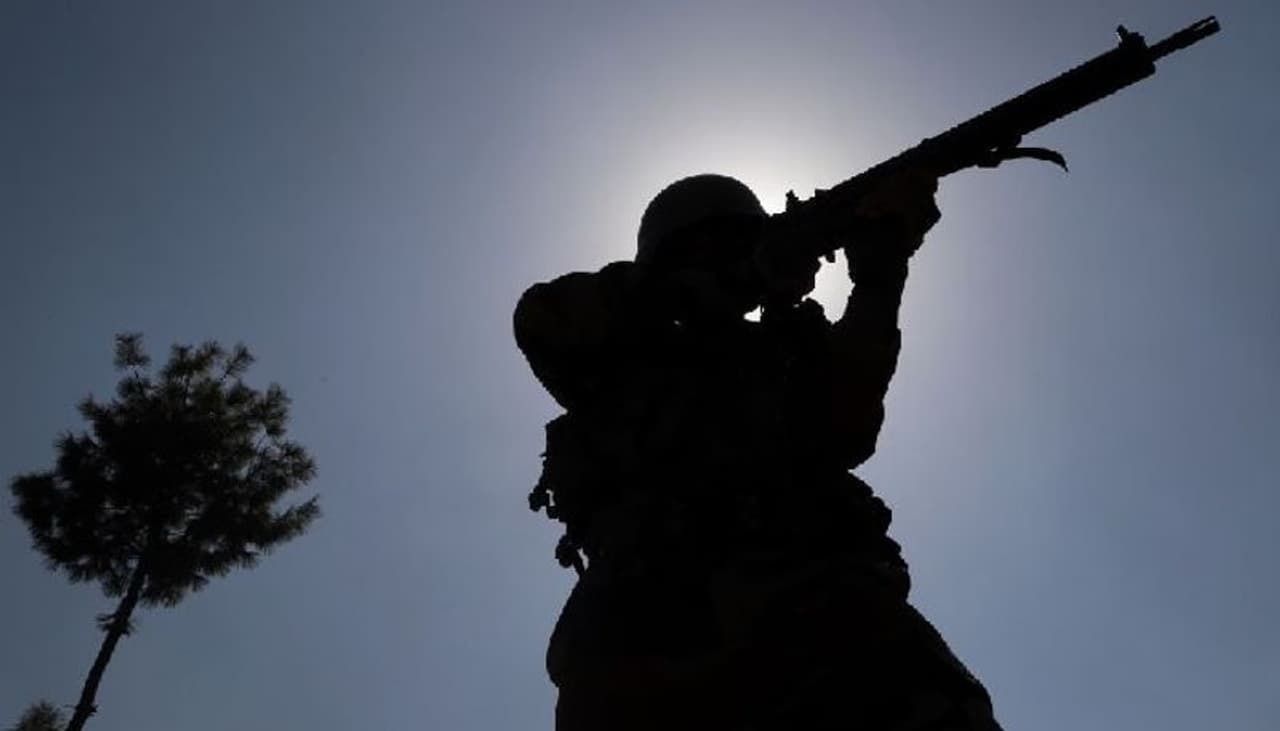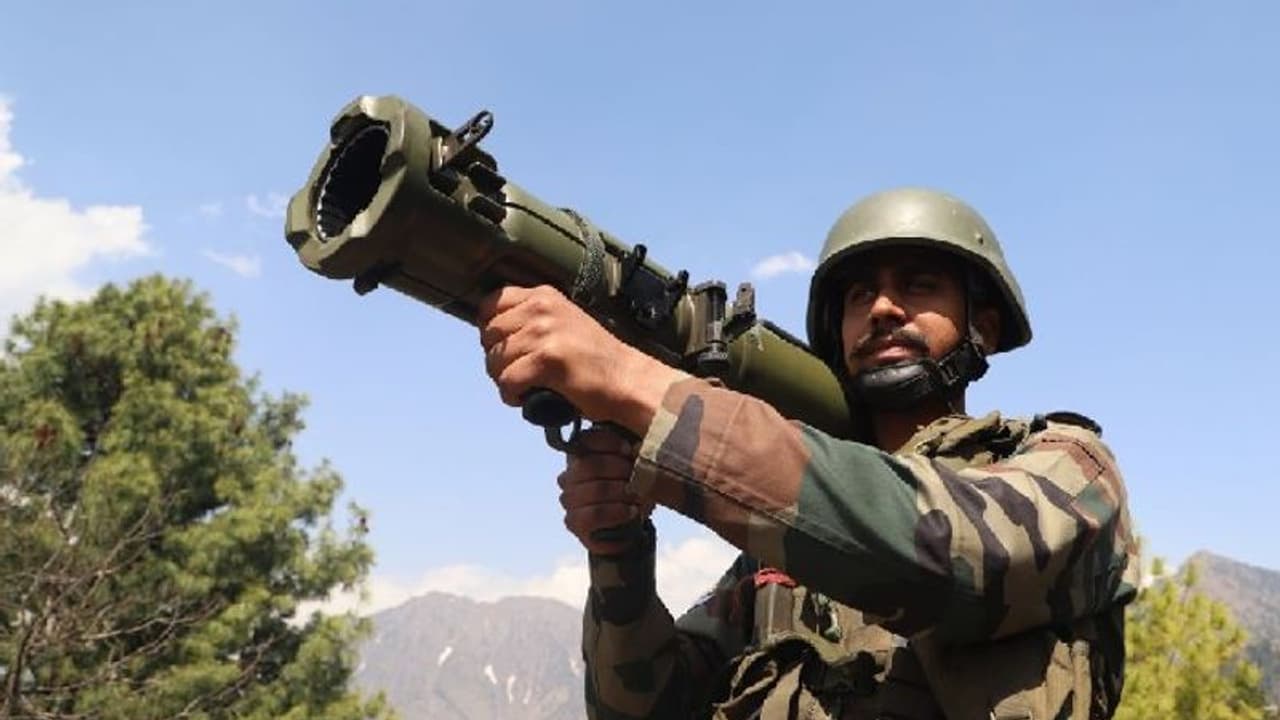Maintaining a high vigil at the forward post in Keran sector, the northern most part of Kashmir along the LoC, troops are maintaining a birds-eye vigil despite ceasefire between the two countries since February last year.
The Indian Army along the Line of Control (LoC) has upped its ante to prevent any malicious intent from across the border, as intelligence assessments suggest the presence of about 250 terrorists across launch sites in PoK.

Despite a ceasefire between the two countries since February last year, troops are keeping a high vigil at the advanced station in Keran sector, the northernmost region of Kashmir near the LoC.
For the soldiers at this frontier, it's a battle that has to be fought on two fronts -- hostile neighbour and harsh winter, which is approaching.
Also read: Caught on tape: Pakistani terrorists infiltrating Line of Control before being killed
Though the claims of the Army that infiltration has reduced in the past few years, officials, who spoke to a group of visiting journalists, said there were intelligence inputs about the presence of about 250 terrorists at various launch pads waiting across the LoC to sneak in.
"So, we cannot let our guard down," one of the army officials said.
The Army is concerned not only about terrorists crossing the border but also about narcotics trafficking.
Director General of the Jammu and Kashmir Police Dilbag Singh recently claimed that Pakistan is leveraging the rising amount of narcotics smuggling over the border to finance terrorism in Kashmir.
The Army officer said, "we are keeping a close eye on the smuggling of narcotics as well apart from infiltration of terrorists and arms and ammunition. The enemy has its ways, but we are firm and ever ready to defend our motherland." And with the winter not far away, the battle is about to get tougher.
"It is a tough fight. Life in these terrains is very difficult," a soldier guarding one of the posts here, in Keran Sector in Kupwara district of Jammu and Kashmir told PTI.
These Army outposts, some of which are at the height of 12,000 feet or more, serve as the first line of defence against invaders using these notorious, well-travelled infiltration routes.

The impressive Shamsabari range is where these infiltration routes come together. The range presents a tremendous challenge to the powers of both nature and man because of its huge peaks, rough terrain, dense forests, and numerous streams.
"Apart from the topography, the weather here is very harsh. It is extreme. We have too much cold here when it snows. The snow can accumulate up to 20 feet and remain there for about three-four months," an army officer said.
Due of strategic considerations, it is impossible to identify the positions, soldiers, or officers. The forces at such checkpoints or their base camps must stock up on supplies during the winter months because the road can become impassable owing to heavy snowfall. Helicopters and choppers are the only means of transportation during those months.
"The road, many bunkers and other infrastructure is not even visible when the snow accumulates. There are high-poles which act as markers for us in such situations when we have to move," the officer said.
Also read: Wargames with Russia and China: 'A fine balancing act' by India
Notwithstanding the nature, the officer said, the duty to protect the motherland is the priority and has to be performed in any case.
"The duty at the forward post can sometimes stretch several hours especially if there is an input (terrorists movement)," he said.
While the ceasefire agreement in February 2021 has managed to keep the infiltration mostly under check this year, Pakistan may revert to its old ways and step up its attempts to smuggle in more terrorists ahead of the winter.
Because of the thick snowfall, the winter months—from November to February or possibly March—are challenging for infiltration. The valley's high elevation regions have significant snowfall, which can build up to about 30 feet in various places.

"There is always this apprehension, this possibility, that before the snow sets in, Pakistan may try to increase the infiltration," officials in the security establishment said, adding it has been happening over the years, and there is no surety that it will not happen again, they added.
However, they said the counter-infiltration grid was strong, and the security forces were alert to thwart any such designs.
"We are alert to any such situation. The AIOS (anti-infiltration obstacle system) is robust and we are keeping a close vigil especially on the known tracks (of infiltration)," they said.
The reiteration of the ceasefire agreement by the two armies has helped the Army on this side to keep a check on infiltration, but the guard is not being let down.
"Yes, the ceasefire has helped. The Pakistani Army would usually try to provide a cover to the infiltrators by firing on our posts when there was no ceasefire. So, that is there. But, ceasefire or not, we have to be alert. We cannot take it for granted," the official said.
They said a multi-tier deployment was in place to stop infiltration -- some of it is physical, some electronic.
"It is a combination of man, machine and surveillance," they said.
Explaining it further, they said apart from the LoC fence, known as the AIOS, there are integrated surveillance systems, including ground sensors, night vision devices, and CCTV cameras to support the robust deployment on the ground.
Of the 743-km long LoC in Jammu and Kashmir, about 350 km is in the Kashmir valley, with 55 km of it in the Keran Sector alone.
(With inputs from PTI)
